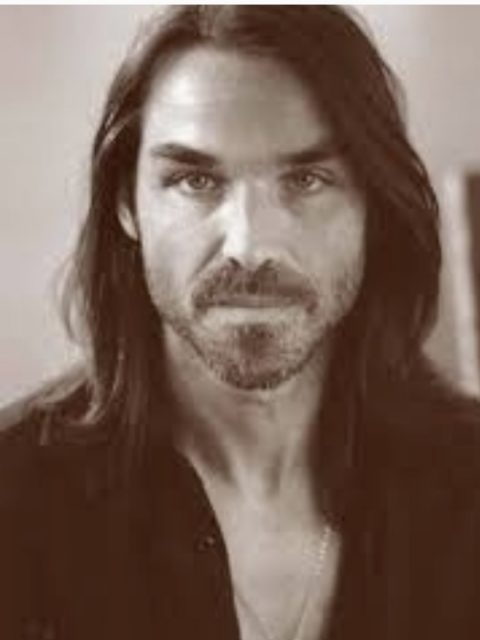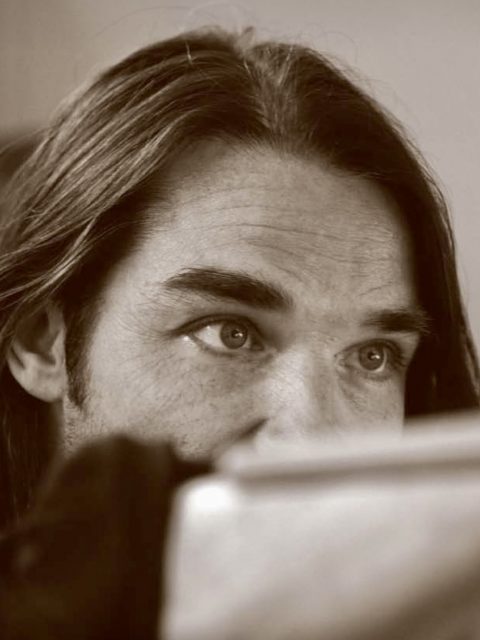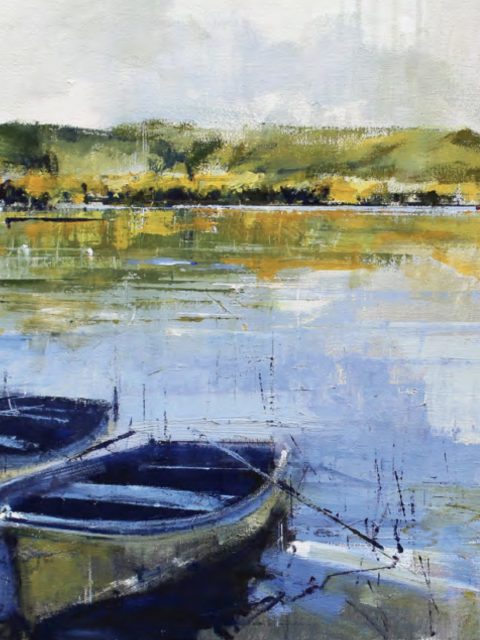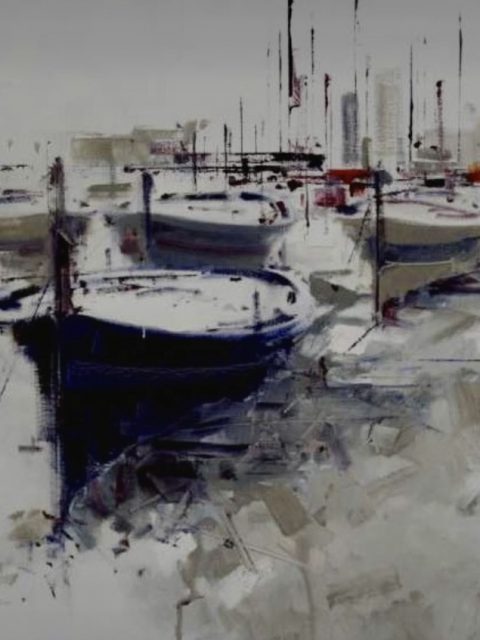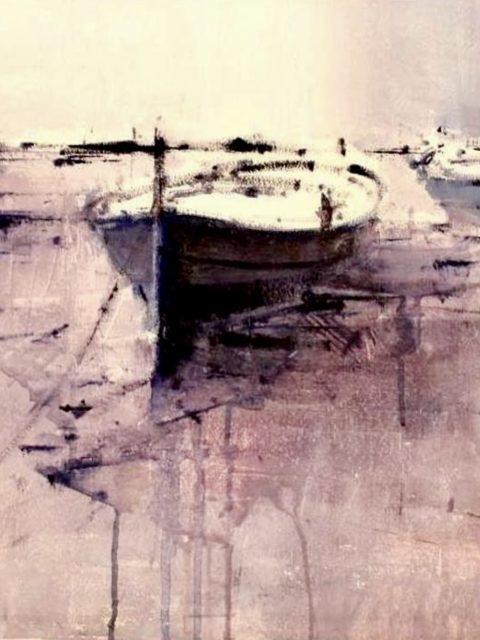Intense, feline, mysterious, deep how the sea blue of his eyes. Sensitive and strong, sometimes distant, wrapped in a halo of light, as in his works. So is he, Jordi Jubany, a painter from the Catalan Maresme, although his paintings are full of memories of immortal cities.
Being a young painter, with a constructive and, at the same time, colorful push, Jordi Jubany born in Barcelona, is an emergent talent in the new Catalan figurative art. When he was still a child, he received his first notions in artistic painting under the guidance of Albert Alís; later, he studied in the Visual Arts School of Vilassar de Mar, and then he returned under the guidance of Mr. Alís, for the purpose of entering profitably into the intense exercise of oil painting.
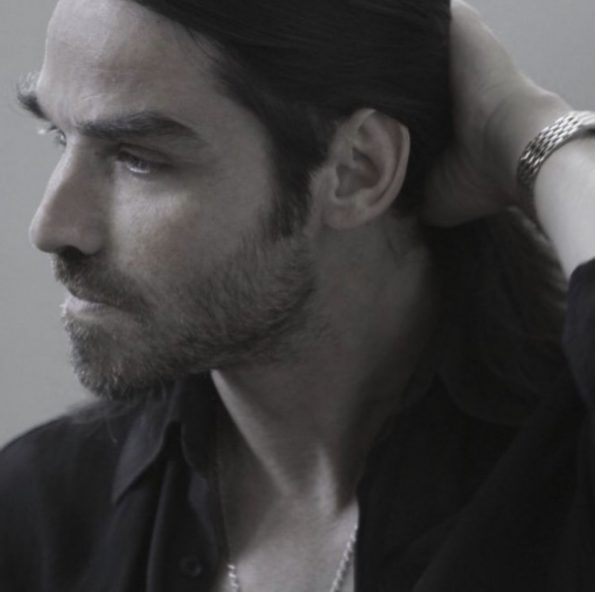
It was with this maister, who was formed with teachers such as Pau Mañé and Raül Capitani (preferably oil and engraving) as well as Josep Martínez Lozano (important watercolour artist, and an excellent painter), when he started to reveal his creative skills. Shortly after he attended a course in the Escola Massana, where he came into contact with the stone, wood and iron, insisting with his volumetric gift, which he already had from the very beginning. Then, he took part indifferent contests, in which he always got selected.
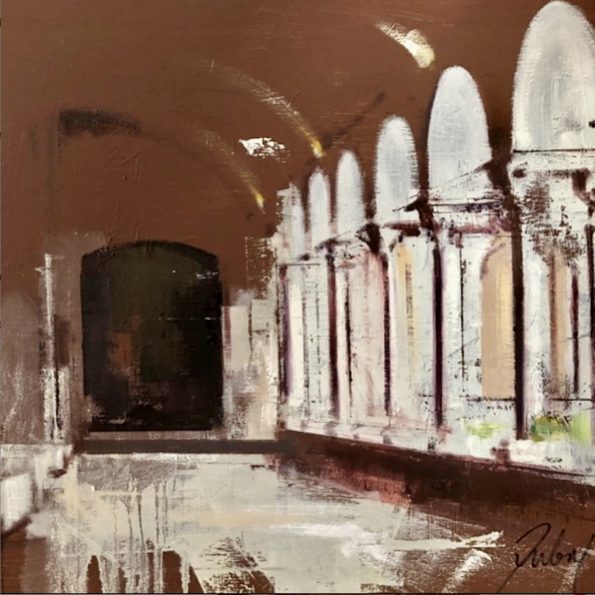
Your works are full of light and are defined with firm strokes. How do you manage to combine the magic of ethereal and delicate intensity with that firmness?
Quite possibly it is one of my objectives in which I still, fortunately, keep very much in mind when executing my work. The ethereal atmospheres, combined with the security that you appreciate in those brushstrokes, give an intriguing and mysterious result. When I am working in the studio, a kind of «unconscious dialogue with the canvas» is created in which «it» does its part, «I» become a channel and there I combine the two forces.
As you know, in art, it is not only about technique… but it is the result of an inner work of the artist. As the philosopher Marx said: The sublime is not in the thing; it is not in the tree, in the landscape, etc. Rather, it is in the reflection of our interpretation. In my case, I only look to «transform» or project my vision of external things into how I am.
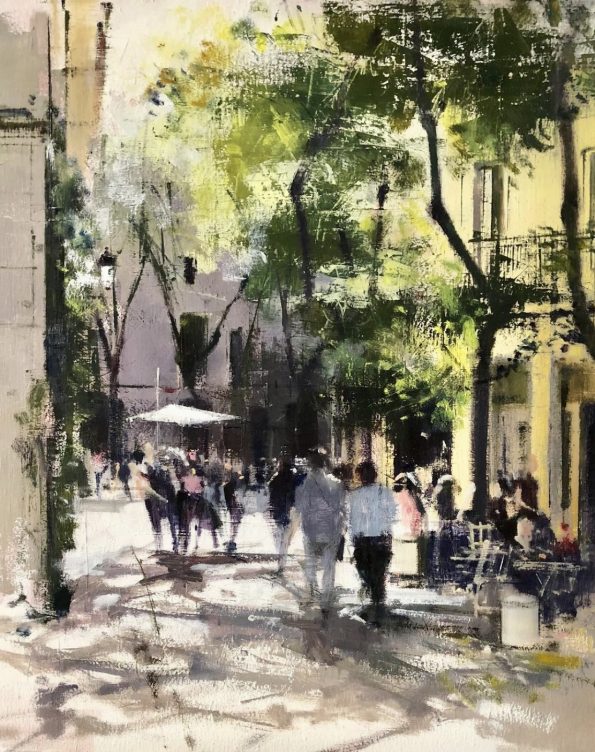
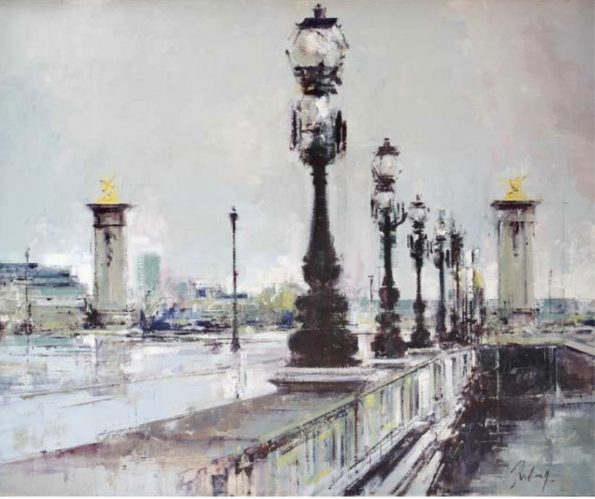
Through your works, we can make a long journey through different cities. How do you choose them and what do you think about when you get there?
There are several reasons why I choose to express myself through the different places, streets or corners of a city, but the «modus operandi» begins with a simple photograph, which is only the first starting point of what later, in the studio, will become something totally subjective and personal. Observation is basic to discover shapes and colors beyond the apparent. A simple flash or reflection of light, form, or perspective, in that photograph, creates a motivating restlessness that makes it irresistible not to paint.
When we visit, with our imagination, a place in the past where we had beautiful experiences, those images are transformed into emotions and if we stay there for a moment we can observe that the beauty still remains. We are emotional beings and an image can make us travel with our thoughts and relive those apparently forgotten memories.
The journey is to live it intensely! As an artist, I have to transform all those memories and emotions into shapes and colors.
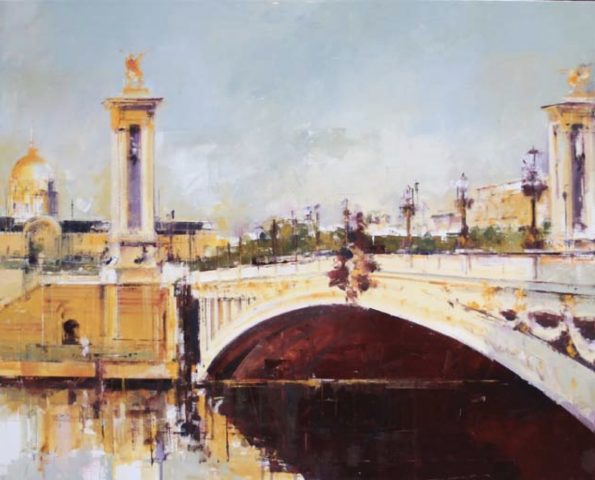
In all the paintings I have seen, I have felt a halo of spirituality that is felt in each of his strokes. It is as if, at a certain moment, there has been not only an evolution as an artist, but also as a human being. Is that so?
Yes, it is like that!
As a person, as an individual, I could be without painting for a specific time, but my condition as a seeker, my way of seeing and understanding life would not allow me to be disconnected for even a minute from that which allows me to have, precisely and paradoxically, the vision of an artist. We could call it spirituality, transcendence or the search for Truth.
The evolution of the human being is made by all of us. All and absolutely all of us are solely responsible for our future as humanity, and for that reason, it is crucial to observe and be attentive to where we are heading. As an artist, I have to tell you that we still have a very minimized vision of reality. I have nothing against materialism, but currently we continue to create false needs for our body and, on the other hand, we are reluctant to cultivate ourselves internally. Allow me to be bold, but my work reflects this a bit. Currently, I paint objects, but I look and aim beyond this.
In short, for me the spiritual or inner vision is one of the essential pillars to continue painting and creating. This allows me to keep looking at myself in the mirror of life and to be more and more «authentic», authentic in the sense of being sincere with myself and with others…, one of the most difficult things there is!

What or who has influenced you the most in your career?
When I was very young, my first references to follow were all those French impressionist painters like Paul Cézanne, Claude Monet or Renoir… but Turner was my favorite!
They were, all of them, a reference that served to identify and situate me, in terms of the treatment of color, in terms of form and in understanding that the atmosphere of a painting is not only the result of technically mastering the theory of color or perspective, but rather it is, in expressing on canvas, the soul of each of these painters.
Saving distances, but no less important in my influences as a painter, is that I had a special interest in calligraphy and everything that had to do with a certain Japanese atmosphere. Sumi-e (monochromatic painting) nowadays, I usually practice it seasonally, always accompanied by haiku (short poems with a metric of 5, 7, 5 syllables per verse). A good haiku must transmit simplicity, it must choose the essential word and project a direct message.
It is not by chance that this conjugation of these styles leads me, sometimes, to disfigure the forms or to transform, in impossible colors, the «reality».
I want to make it clear, also, that I am a staunch follower of the abstract expressionist painter, Mark Rothko. His transcendental or spiritual contribution to the history of art, going beyond what is possible in terms of the search and awareness of human emotions, is essential and for me one of the best artists of all time.

What techniques do you use? It looks like a mix of watercolor and oil.
Yes, I usually use the oil on canvas technique. Sometimes I «overdo it» with turpentine essence. hahahahah! This is usually used in order to make the oil flow or to make the oil more fluid on the canvas, especially in winter (the oil is usually at low temperature). I use it to give a feeling of lightness and spontaneity. Technically, the use of turpentine essence has the «danger» of affecting the pigment, so, although it may not seem so, I use it sparingly.
I like that the brushstroke, on the canvas, creates a certain unexpected naturalness (dripping) as a result of a quick and firm gesture! Others would rectify it, not me.
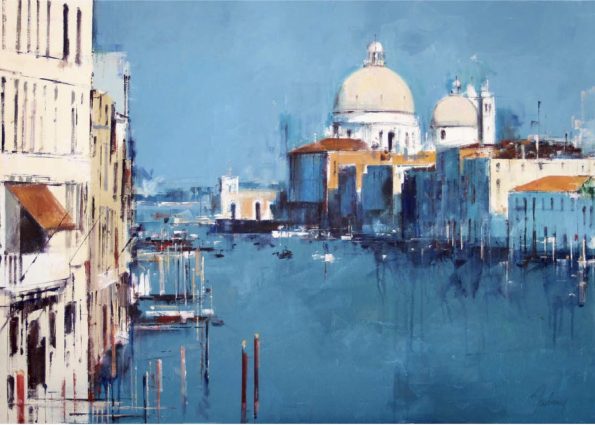
Love life and love art»? Do you identify with this maxim?
Sure, but …Let me make a little reflection on this!
Loving life is undoubtedly one of the most important things one should always do, but let’s not get confused. Giving thanks for what we have and for what we don’t yet have is basic to our development as human beings. But allow me to make a clarification or digression in this very deep question you ask me. In my opinion, both the concept «Art» and the concept «Life», if we look at them, we usually «place» them outside of us, as something to love or not! What I mean by this and not to confuse the people who are reading this interview (laughs) … (laughs) …. From my point of view it is basic to make the «symbiosis or collaboration» of that which we name life/Art or whatever, with ourselves. Life, Art, etc, is part of us, it comes from us, we create our world, there is no life or art without «us»!!!!! Let us love things from essentially knowing ourselves.
Without knowing where we are heading as human beings, without knowing what we are, there is nothing to love.
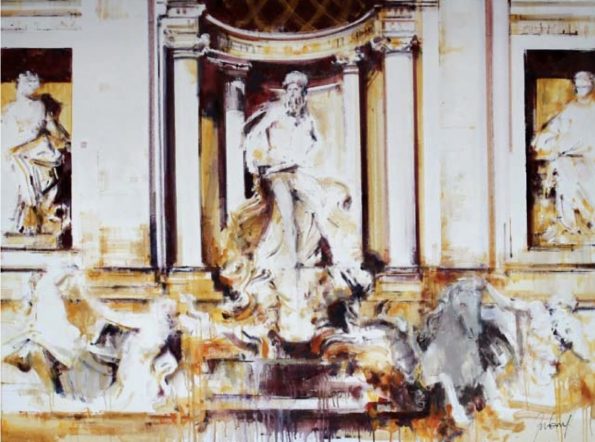
From your beginnings to your present reality, what would be the moment to highlight?
I would highlight a couple of moments,
First, luckily, at home when I was very young, there was a special attention to the arts in general. My first painting that I remember is a «small» Opiso hanging in the center of a cabinet that occupied the entire length of the hallway. In the office there were a couple of seascapes and a portrait of my mother, by a very good painter, born in my town, who would later become a teacher and a reference in my career. In general, at home there was a certain appreciation for painting. I owe my love for the plastic arts mainly to my mother, who, on the one hand, strongly influenced my career as a painter, and on the other hand, the genetic influence; I inherited her «duende», her elegance and love for a job well done.
Then I would like to highlight my entry, a few years ago, by the gallery El Claustre. From the first moment I felt that everything we did together would work out well, and it did and does. They have been part of my success as a painter. I have always felt loved and respected and even today I am still part of the group of painters of the gallery.
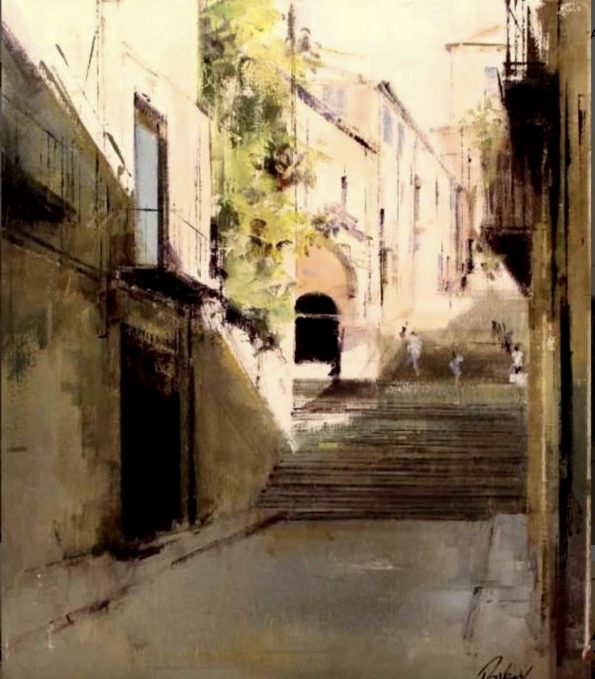
How would you define Jordi Jubany, painter, and Jordi Jubany, human being?
Look…if you refer to the fact of defining myself with one or more adjectives, they could be very similar. Precisely, as a human being I like to define myself as a person with the ability to know how to use my tools to overcome any challenge that is put in front of me. I also feel very good about helping the people around me, whether I know them or not.
The physical tools, as a painter, or the psychological tools as people, we must always have them in «good condition».
I am fortunate to see and appreciate that my profession as an artist can help to put order in my life through plastic expression, and at the same time, the experiences and teachings of life, emotionally or psychologically, allow me to develop as a painter.
For that reason, I commented before or I wanted to express that there are practically no differences between a Jubany painter and a Jubany person.
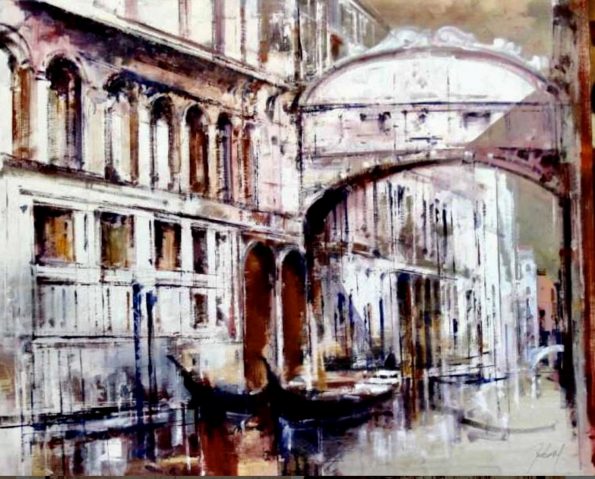
I would like you to share with us how you see your future in a few years.
It’s not easy for me to do this exercise of looking into the future! I have always put a lot of focus on letting myself flow, in terms of my way of expressing myself, both as a painter and as a person. From the experience I have, the «paint as you think» is not always a rule of three, but in my case… I’m afraid it is, hahahahahahahahahah!!!! By this I mean that if I continue on the path of «disfiguring» the form, if I continue to pay more attention to the emotions of the human being, if I focus on what really interests me as a person and seeker (the intrinsic essence of the human being), I will probably end up doing a different kind of painting than the current one (?), maybe more subtle, I don’t know! I would not like to anticipate events…hahahahahahahaha
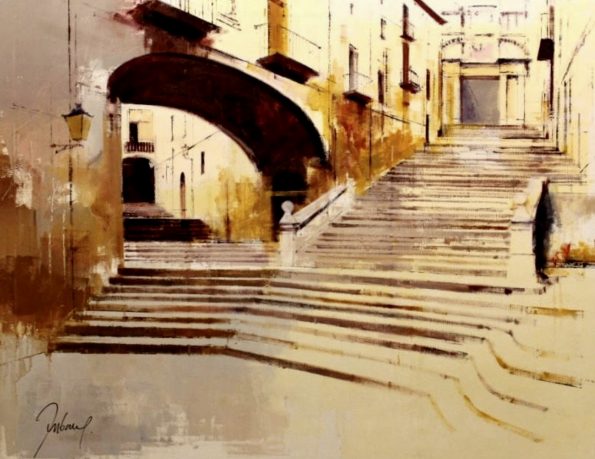
What city or monument would you like to paint that you have not yet done?
I really want to visit Israel.
It must be full of beautiful places to discover. I am not only attracted by the place itself, but rather by a set of reasons why I think it will be a great experience; The coincidence of the three cultures, the contrast of modern and ancient Israel… knowing that they are one of the most technologically developed nations, considering that they have a relatively small territory and population… It makes you think about their strength, capabilities and resources. For me, it is the best example of resilience both as a civilization and as a country.
I have seen that in your website there is a section on «Reflections on art and spirituality». What are the reflections that you came up with?
As you have been able to see throughout the interview, one of my basic pillars where all my work and my life takes place and supports, is in that invisible part of the human being, which we can call it in different ways, spirituality, consciousness, etc. My work as an artist is based on this.
I am no longer satisfied with just painting or expressing it plastically, but I need my moments of reflection and silence to draw conclusions and continue shaping at another level all those reflections or intuitions that I experience before, while and after painting. All this helps me to put order in my ideas, and these become fuel for my future works.
Answering the question, my conclusion would be that art is essential for the human being. We can and must learn to discern what we are through a good work of art. Art is an experience, art has to be felt, it has to move you or even feel some kind of repulsion. I believe that it is not only about appreciating what we consider beautiful or understandable, but rather to understand that behind an artistic creation there is some hidden message at some other level. From my point of view it is good to study the author and try to draw our own conclusions through a work of art.
Individual exhibitions:
Galeria d’Art El Claustre, Girona and Figueres.
Rusiñol Art Gallery, Sant Cugat del Vallès.
Súbex Gallery, Barcelona.
Work in the Caixa Laietana fund.
